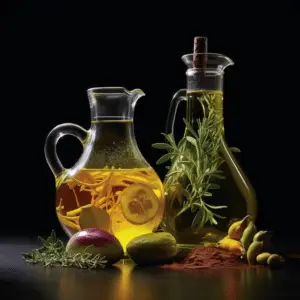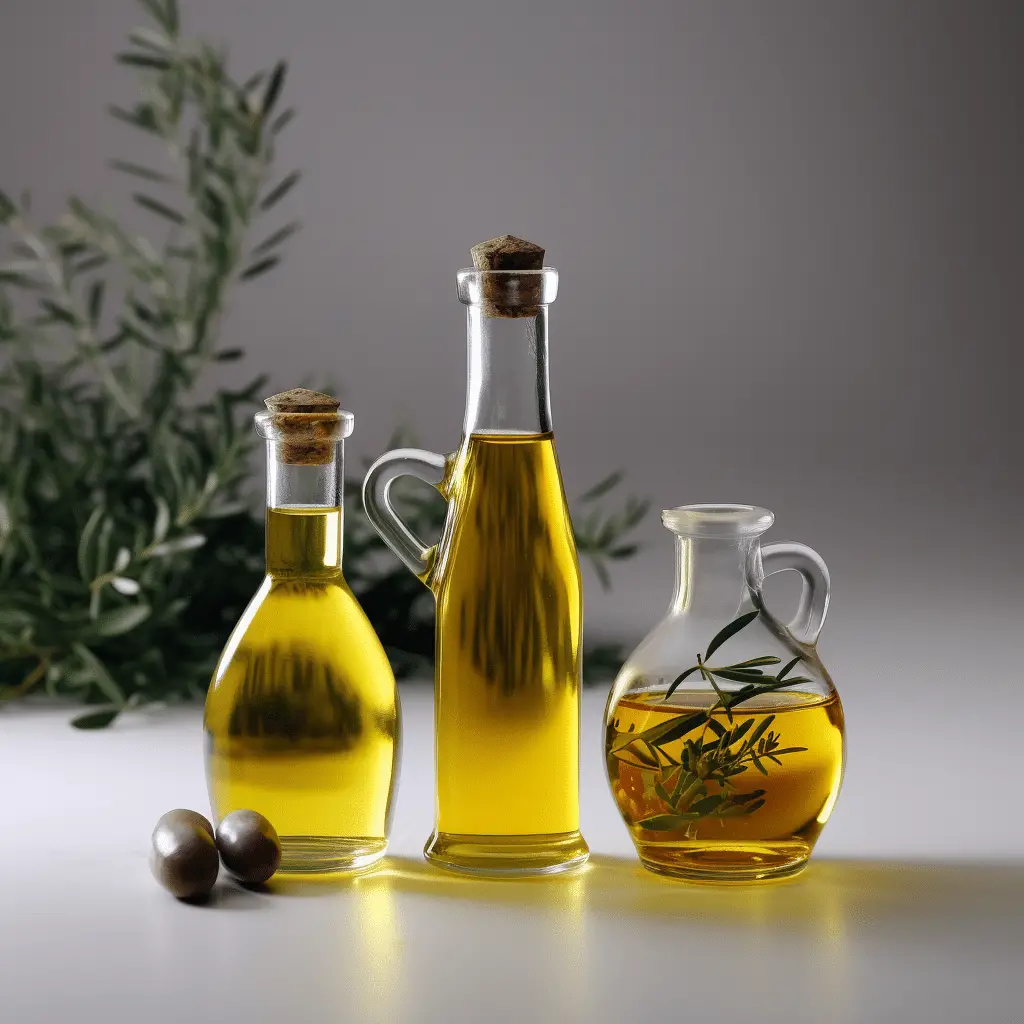Vegetable Oil vs. Olive Oil: Usage and Substitutes
Although an essential ingredient in recipes, oil is often underestimated. There are different types of oils, each having unique benefits for health and culinary purposes. And choosing what kind of oil to use in a recipe impact its final results.
Vegetable and olive oil are two popular oils that don’t miss in most kitchens. But how do they differ? Can you use them interchangeably? Stay locked to gather more about these two oils and whether you can use vegetable oil instead of olive oil.

Can You Use Vegetable Oil Instead Of Olive Oil?
Yes, depending on what you’re preparing and the cooking method used. Some foods are best cooked with vegetable oil, not olive oil. In such a case, you can substitute olive oil for vegetable oil. However, some dishes are best prepared with olive oil, and using vegetable oil may not give you the best outcomes. Here are foods ideal for making using vegetable oil instead of olive oil and those that are not.
Deep-Fried Foods
The crunch and crispiness of deep-fried foods make them loved by many. When it comes to deep-frying, it’s best to use vegetable oil instead of olive oil. Vegetable oil is neutral-flavored, making it perfect for deep frying. Deep-frying foods require oil with little to no flavor so that it doesn’t interfere with the taste of the fried food. On the other hand, olive oil has a strong flavor that can impact the food cooked.
Besides flavor, vegetable oil has a higher smoking point. This means you can heat it at high temperatures, and won’t burn. With a smoking point of 450 degrees, vegetable oil can heat up to frying temperatures without burning.
Refined olive oil has a smoke point of 465 degrees, while extra virgin olive oil heats up to 325 degrees before smoking. So, unless you’re using refined or light olive oil, which is an inferior quality with less flavor, extra virgin olive oil will burn before attaining deep frying temperatures.
Then there’s the aspect of cost. Deep frying food means immersing it in cooking oil. Doing so needs numerous cups of oil, unlike sauteing. And since vegetable oil is more affordable than olive oil, it’s best to use it.
Baked Goods
Unless the recipe specifically calls for olive oil, like olive oil cake, always use neutral-flavored oils when baking. Using vegetable oil in baking means your bread or biscuits will have the flavor you intend them to have, not olive oil’s flavor, and still get the required fat. As for olive oil, this will change the flavor of whatever you’re baking, making it not come out as you’d like.
Sauteed Foods
Either vegetable or olive oil works okay with sauteed foods. During stir-frying or sauteing, the cooking temperatures don’t exceed 350 degrees. So you don’t have to stress if you’re pan-frying with olive (325 degrees) or vegetable oil (465 degrees). The solid olive oil flavor will also not affect the food you’re cooking, as sauteing doesn’t require too much fat.
Thus, decide whether to use vegetable or olive oil when sauteing. The latter is costly and may be worth saving for dips or dressing, where you’ll enjoy the enhanced flavor.
Salad Dressings
Most salad dressings require oil. And the best oil to use for most salad dressings is olive oil. The exquisite and robust flavor makes olive the perfect base for vinaigrettes and other condiments. This oil will upgrade your salad dressing and make it flavorful, unlike when using neutral-flavored oils like vegetable oil.
Marinades
Marinades are great at making your lean meat juicy so that it doesn’t dry out when cooking. They also help other marinade ingredients like spices stick to your flesh, enhancing flavor. It’s best to use olive oil when marinating your meats. Its intense flavor enhances your food’s taste, making it better than vegetable oil.
Is Vegetable Oil The Same As Olive Oil?
Vegetable oil is different from olive oil. These two may be used in various similar ways but have less in common.
About Vegetable Oil
As the name suggests, vegetable oil is made from various parts of plants – like seeds, grains, nuts, or fruits. The oil is extracted using heat, after which it undergoes refining. During refining, various aspects of the oil are removed – like color, taste, and smell. This is why vegetable oils are almost colorless, neutral-flavored, with no aroma.
Vegetable oil can be sold as a one-type of oil or a combination of oils. Single plant sources of oil are usually labeled using the parent plant used. For instance, peanut, soybean, corn, canola, sunflower, coconut or safflower oil. Sometimes various plant oils are mixed to make a collective called vegetable oil.
Since vegetable oil lacks taste and smell, it’s an excellent choice when you want to prepare food but don’t want any additional flavors. Vegetable oil is also more affordable and can suit those on low budgets.

About Olive Oil
Olive oil is one of the most glorified oils you can find. The promising health benefits, unique flavor and aroma make this oil popular.
This type of oil is made from olive tree fruits. During processing, olives are pressed, releasing oil. Not all types of olive oil are the same. Depending on the amount of pressing and refining, olive oil will have different tastes, color, and aromas.
Less refined olive oils are more expensive than expensive ones. When olives are more pressed and refined during processing, they produce less flavorful oil. On the other hand, minimal pressing and refining, as in making extra virgin olive oil lead to olive oil that has an intense flavor and is rich in antioxidants. But generally, olive oil is more expensive than vegetable oil.
High-profile olive oil has a herb-like taste with a fruity aroma. The ripeness of olive fruits also affects the color of the oil. Olive oil color can range from light green to golden.
Conclusion
Depending on what you’re preparing and the cooking method, you can use vegetable oil instead of olive oil. Use vegetable oil for deep-frying and baking unless the recipe specifically calls for olive oil. As for marinades, salad dressings, and sauteing, use olive oil instead.





